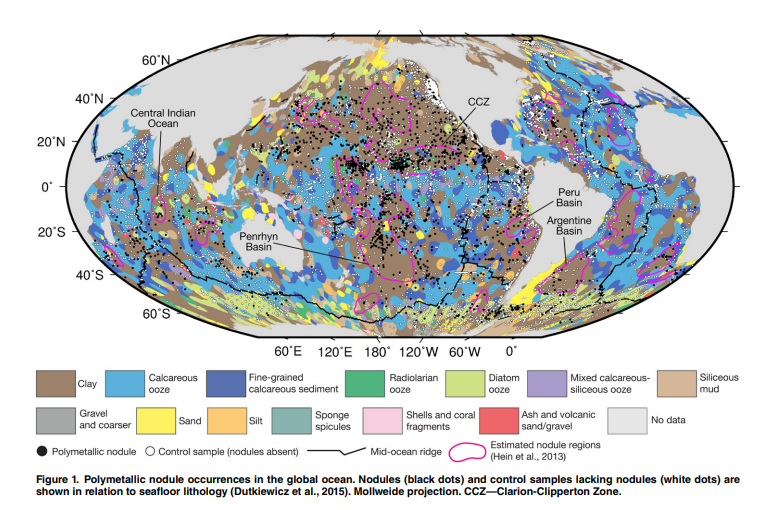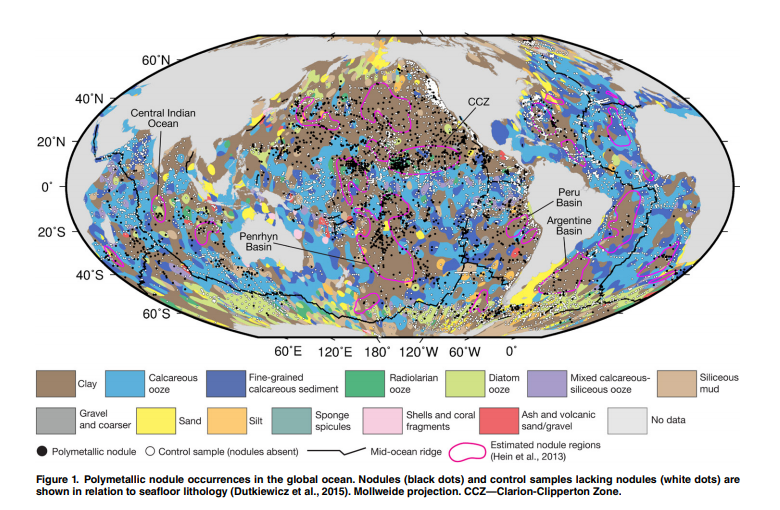
Abstract: Polymetallic nodules found on the abyssal plains of the oceans represent one of the slowest known geological processes, and are a source of critical and rare metals for frontier technologies. A quantitative assessment of their occurrence worldwide has been hampered by a research focus on the northeastern Pacific Ocean and the lack of a global open-access data set of nodules. We have compiled a global data set of >10,000 seabed nodule and control samples, and combine it with digital grids of key environmental parameters to generate a predictive machine-learning model of nodule occurrence. In order of decreasing parameter ranking, we find that nodules are associated with very low sedimentation rates (< 0.5 cm/k.y.), moderately high oxygen values (150 and 210 mmol/m3), lithologies of clay followed by calcareous ooze, low summer surface productivity (<300 mgC/m2/day), low benthic biomass concentration (<1 log mgC/m2), water depths >4500 m, and low total organic carbon content (0.3–0.5 wt%). Competing hypotheses for nodule sustention and thus continued growth on the seafloor are the removal of sediment by bottom-water currents and biological activity. Using a high-resolution eddy-resolving ocean circulation model, we find that the bottom-current speeds over nodule fields are too low (<5 cm/s) to remove sediment, implicating the activity of epibenthic megafauna as the most likely mechanism. Our global nodule probability map combined with the assessment of a range of environmental drivers provides an improved basis for decision and policy making in the controversial area of deep-sea exploration.
Citation: Dutkiewicz, A., Judge, A. and Müller, R.D., 2020, Environmental predictors of deep-sea polymetallic nodule occurrence in the global ocean, Geology, 48, 293-297, https://doi.org/10.1130/G46836.1
To download the paper, click here. For access to notebooks and data, click here.
![]()

